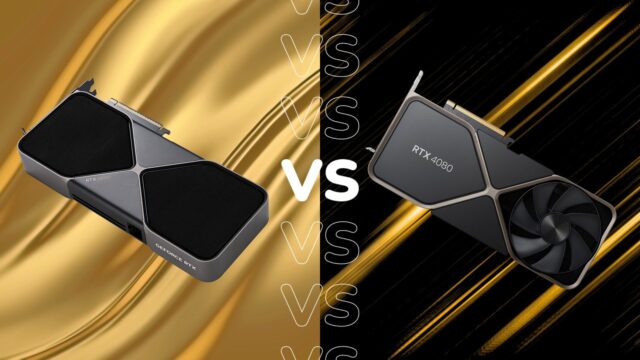Earlier this year, Nvidia unveiled its highly-anticipated RTX 50 graphics cards. Here’s how the new Nvidia RTX 5080 compares to the last generation RTX 4080.
Like the rest of the RTX 50 series, the RTX 5080 is based on the new Blackwell architecture and brings some major performance improvements and AI enhancements, including DLSS 4.
Keep reading to discover how the RTX 5080 compares to the RTX 4080 or head to our Nvidia RTX 5090 vs 5080 guide to learn how the RTX 5080 stands up to the top-of-the-range RTX 5090.
| RTX 5080 | RTX 4080 | |
| Nvidia architecture | Blackwell | Ada Lovelace |
| DLSS | DLSS 4 | DLSS 3 |
| AI TOPS | 1801 | 780 |
| Tensor cores | 5th gen | 4th gen |
| Ray tracing cores | 4th gen | 3rd gen |
| Memory configuration | 16GB GDDR7 | 12/16GB GDDR6X |
| Memory bandwidth | 960 GB/sec | 717 GB/sec |
Price
The Nvidia RTX 5080 was announced on January 6 2025 and was officially released on January 30. Prices for the GPU start at $999/£979 for 16GB of memory.
The Nvidia RTX 4080 was announced two years earlier on January 3 2022. The GPU hit stores on February 8, with prices starting at $899/£949 for the 12GB model and $1199/£1269 for the 16GB one.
The Nvidia RTX 5080 is twice as fast
The Nvidia RTX 5080 is doubly as fast as its predecessor playing games. This is thanks to several upgrades, including Nvidia’s latest Blackwell architecture, the addition of DLSS 4 and the GPU’s increased memory bandwidth.
All of the above leads to twice as fast performance when playing AAA titles like Alan Wake 2, Black Myth: Wukong and Cyberpunk 2077 in 4K with high frame rates, ray tracing switched on and other settings maxed out compared to that on the RTX 4080.

The Nvidia RTX 5080 improves AI performance
You can also expect improved AI performance from the Nvidia RTX 5080 thanks to its 5th-generation Tensor cores.
The updated dedicated AI accelerators result in 1801 AI TOPS up from 780 on the RTX 4080. That’s an increase of 130% compared to the previous generation. This should improve performance when tackling AI tasks such as increasing game frame rates with DLSS, enhancing audio and video during live streams, and using AI tools in creative workflows.
The Nvidia RTX 5080 supports DLSS 4
Speaking of DLSS, the Nvidia RTX 5080 introduces support for DLSS 4, the latest version of the technology.
DLSS – or Deep Learning Super Sampling – encompasses multiple neural rendering technologies, including Frame Generation, Ray Reconstruction, Super Resolution, DLAA and more. It’s also powered by those aforementioned Tensor Cores. The goal of DLSS is to improve the image quality and frame rate of games, which can even lead the GPU to surpass what is possible with native resolution rendering.
The biggest addition to DLSS 4 is Multi Frame Generation. This means the Tensor cores can now render three frames between each native frame. When combined with other DLSS technologies, Multi Frame Generation makes it possible to increase the framerate by up to 8x.


The Nvidia RTX 5080 has a larger memory bandwidth
The RTX 5080 also boasts a higher memory bandwidth than the RTX 4080.
While both GPUs are available with 16GB of memory. The RTX 5080 provides up to 960 GB/sec of total memory bandwidth. That’s a sizeable 34% increase compared to the 717 GB/sec bandwidth supplied by the RTX 4080.
The RTX 5080 also uses GDDR7 memory, whereas the RTX 4080 uses GDDR6X.
Early verdict
The Nvidia RTX 5080 is a clear upgrade over the RTX 4080 thanks to its faster performance, improved AI performance, DLSS 4, a larger memory bandwidth and more. However, you’ll need to wait for our full review of the graphics card to hear our final verdict.










